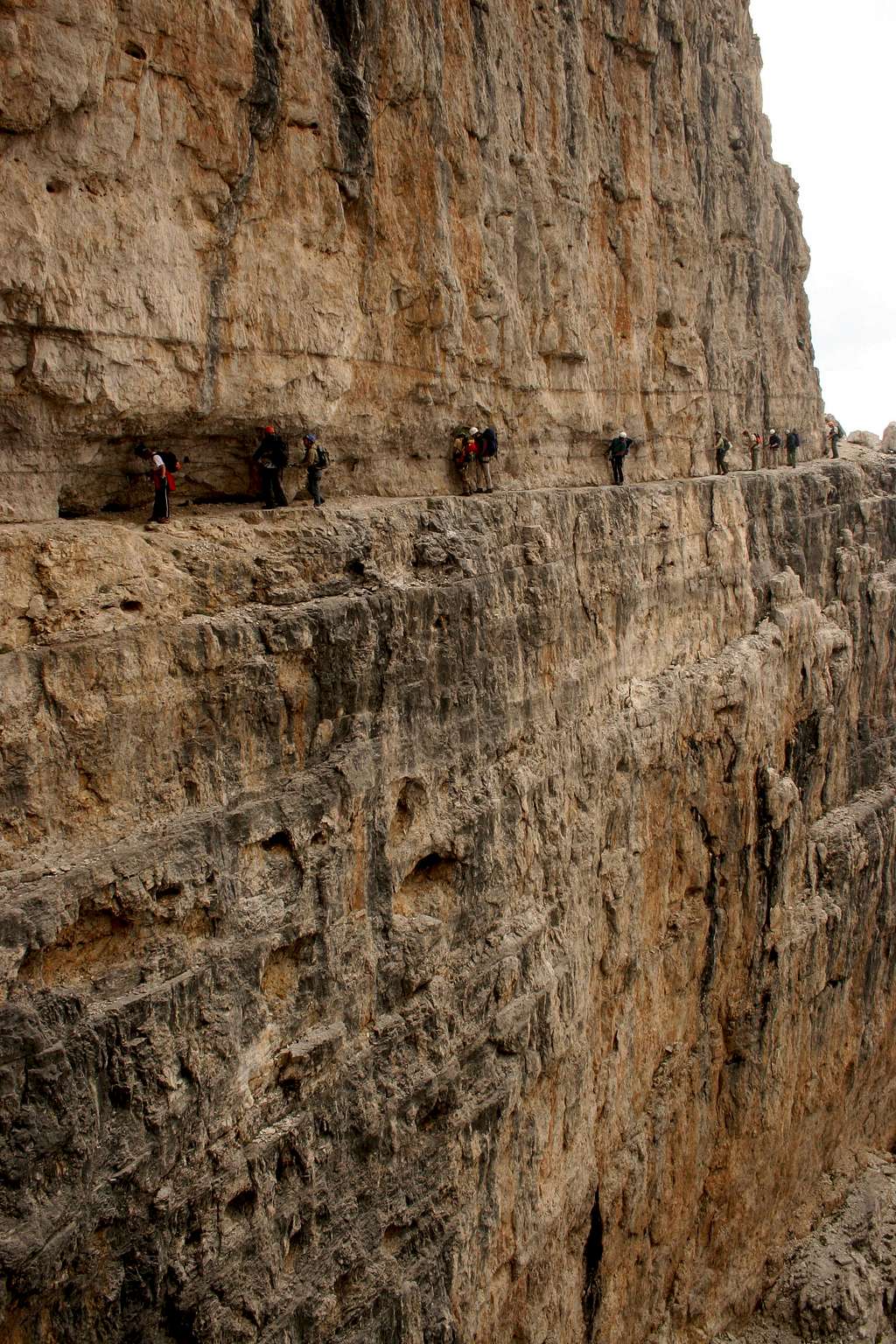Vid Pogachnik - Jul 24, 2008 4:30 pm - Voted 10/10
I remember......this place. And a similar crowd, which was hard to overtake.
Piku - Jul 25, 2008 7:13 am - Hasn't voted
Yes ...... it is an amazing wall. People, You can see, are my "Trekkers".
BigJordan - Jul 28, 2008 6:09 pm - Voted 10/10
CoolThat is one awesome picture my friend. one awesome picture.
Piku - Jul 30, 2008 1:23 am - Hasn't voted
Re: CoolIt was the same opinion of my friends on the wall :-))).
Marcsoltan - Sep 26, 2008 1:19 pm - Voted 10/10
WowAre there climbs on this rock? And if so, are there anchor bolts on the base of each climb? It looks like a sport climbing heaven.
It looks like a very inspiring place to put up routes.
Piku - Sep 26, 2008 1:30 pm - Hasn't voted
Re: WowIt is probably the most famous "Via Ferrata" in the (Brenta) Dolomites.
So not a typical climbing place. Too crowded for it. But it is perfect for guys like me. For the "Lovers of Vie Ferrate".
Marcsoltan - Sep 26, 2008 1:38 pm - Voted 10/10
Re: WowOkay Miki, no climbing here. But, I am sure there are many many other and better places for sport climbing nearby.
I am sorry but, what is the meaning of Vie Ferrate? Is that mean "on foot"?
Marc
Piku - Sep 26, 2008 2:09 pm - Hasn't voted
Re: Wow"Via Ferrata" (in italien) or "Klettersteig" (in german) stands for "Equipped Route" in english. May be.
It is a protected hiking (or climbing) path secured mainly by iron ropes, ladders, bridges, etc.
But here is the exact definition from Wikipedia:
"A via ferrata (Italian for "iron road". Plural vie ferrate. In German, Klettersteig) is a mountain route which is equipped with fixed cables, stemples, ladders, and bridges. The use of these allows otherwise isolated routes to be joined to create longer routes which are accessible to people with a wide range of climbing abilities. Walkers and climbers can follow via ferratas without needing to use their own ropes and belays, and without the risks associated with unprotected scrambling and climbing. They are found in a number of European countries, including Italy, Germany, France, Austria, Slovenia, Switzerland, Spain and Sweden; and a few places in the United States, Canada and England. The first via ferratas were built in the Dolomite mountain region of Italy during the First World War, to aid the movement of mountain infantry."
Marcsoltan - Sep 26, 2008 3:18 pm - Voted 10/10
Via FerrataThank you Miki, for taking the time to fully define this term for me. I have done very little climbing or hiking in Europe,
but what I found out was that the mountains are much better equiped for travelling than the mountains here in the U.S. May be someday we would reach the same level, or may be never. One example, there are NO bathrooms on Mt.Whitney, one of the most travelled and popular mountains in America.
merrill - Sep 27, 2008 9:57 am - Voted 10/10
AmazingWas that path cut in the rock or is it natural? How far is the drop off?
Merrill
Piku - Sep 27, 2008 10:54 am - Hasn't voted
Re: AmazingBasically natural. But there are lots of artifical work. As far as I know.
About the drop-off. Some hundreds meters as I estimated. I did not climb vertically :-).
EricChu - Oct 29, 2009 4:48 pm - Hasn't voted
Great!A spectacular photo!
Piku - Oct 31, 2009 8:12 am - Hasn't voted
Re: Great!Thank You Maurice.
Come with us and yarn about the music! That is another wonderful world :-).
Regards,
Miki












Comments
Post a Comment